
Where We Be
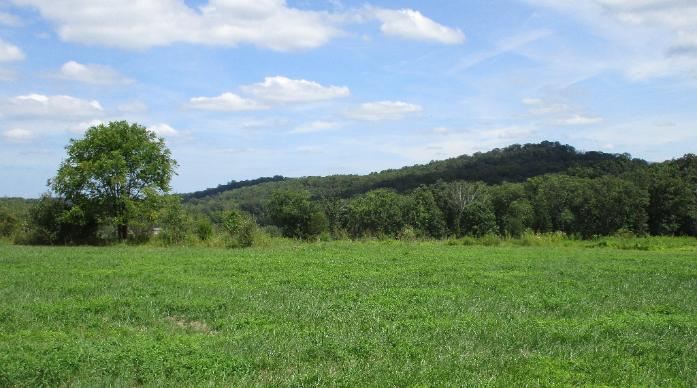
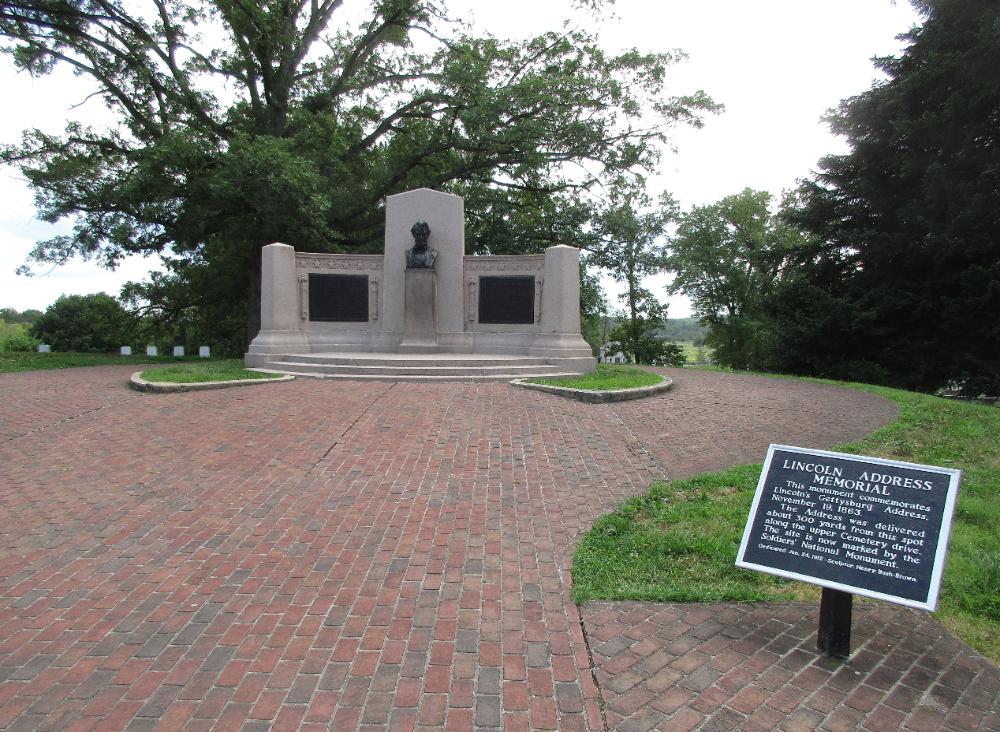
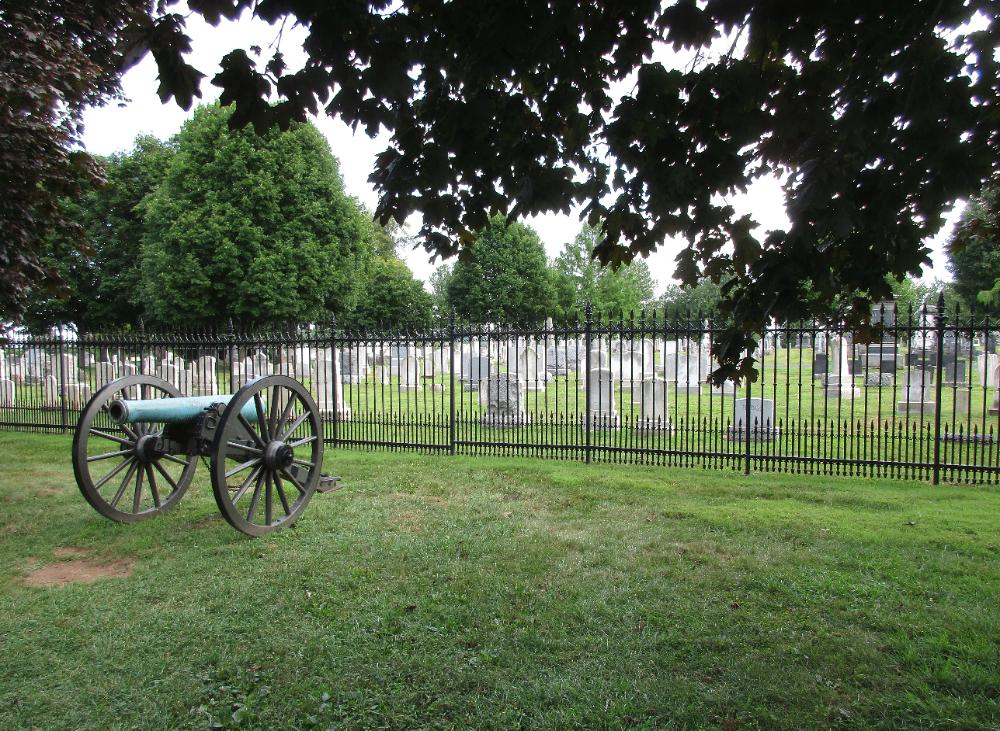
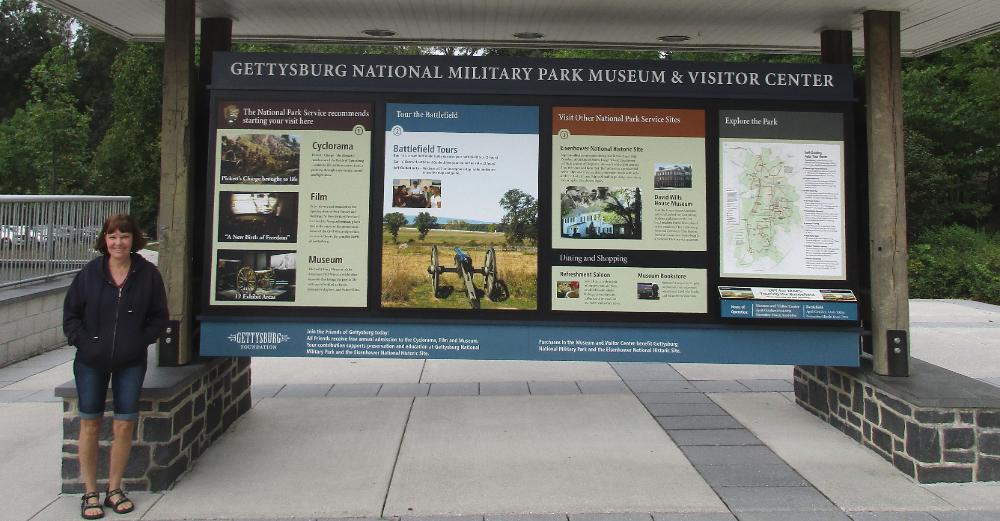
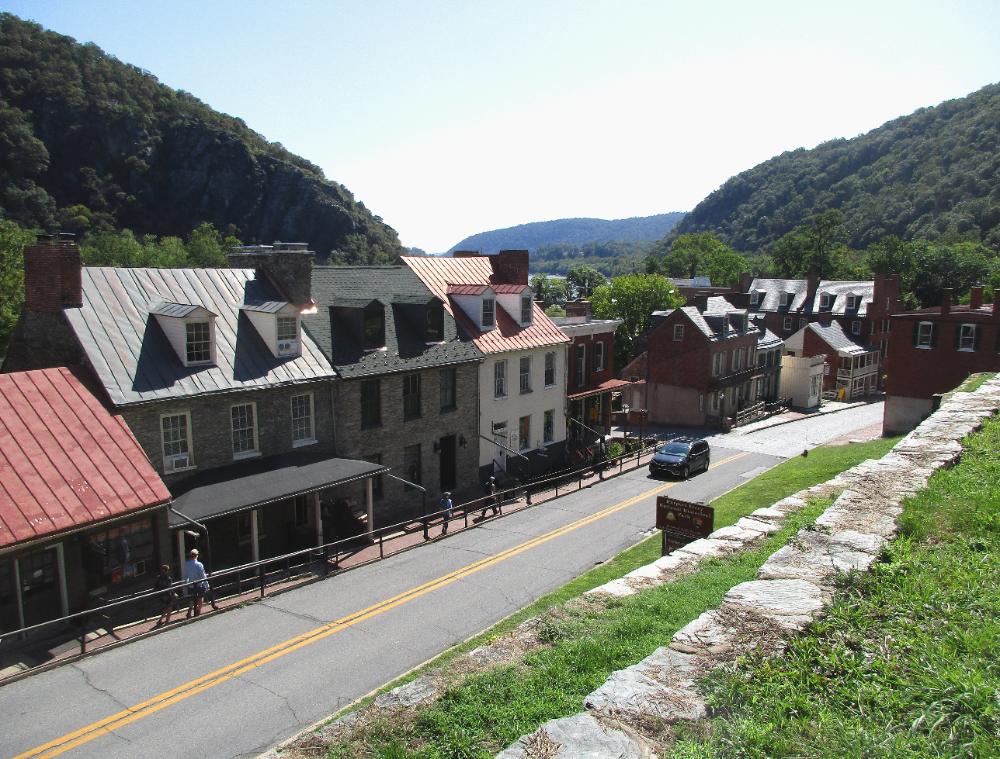
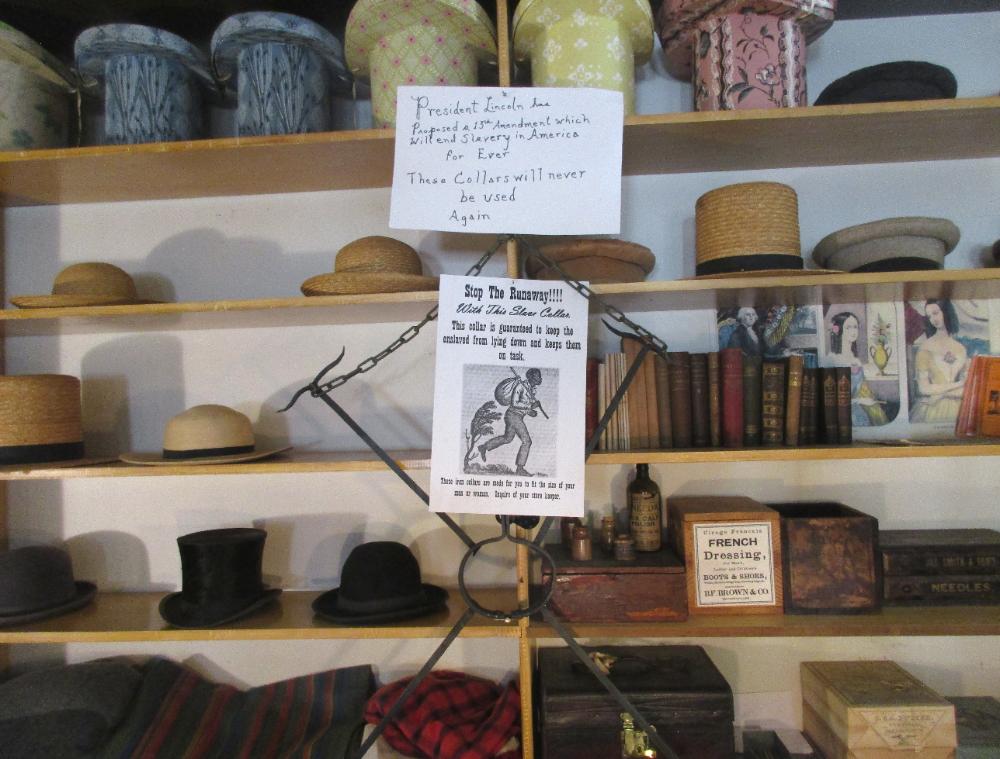
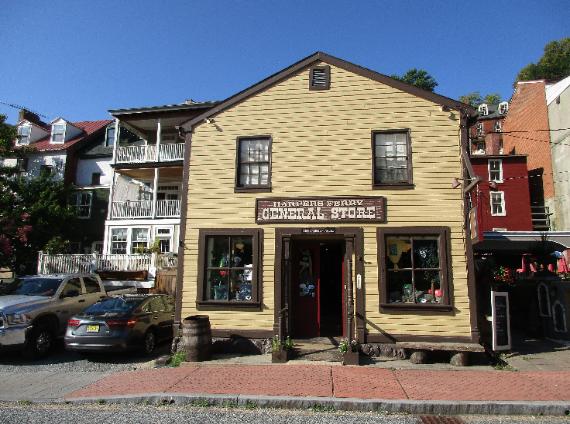
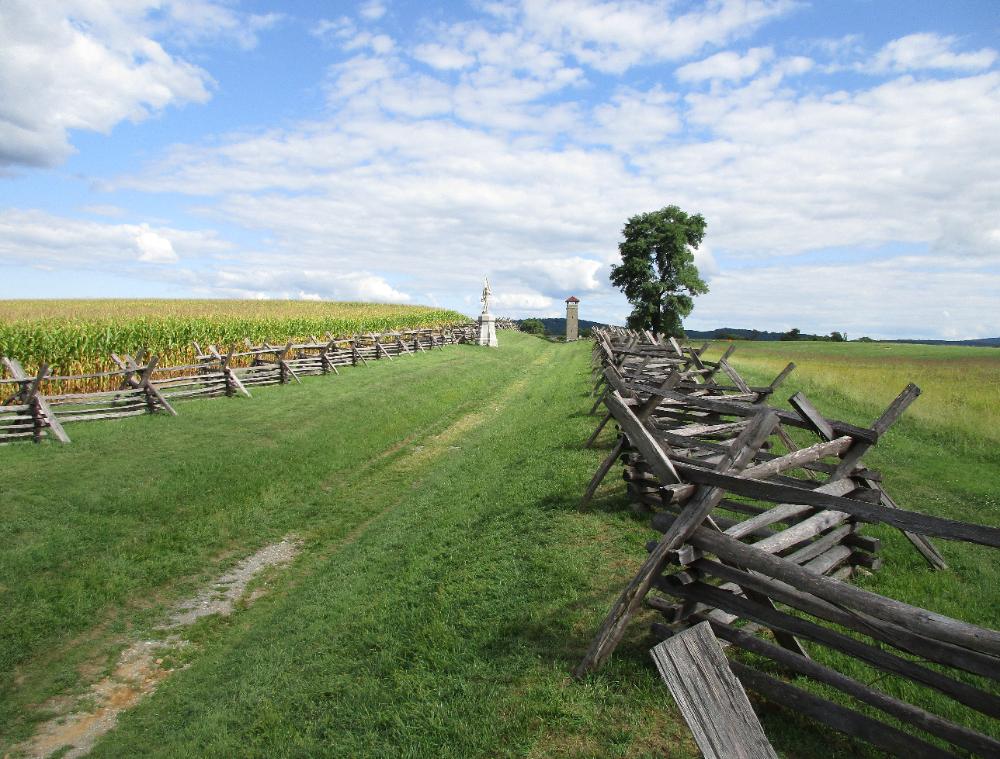
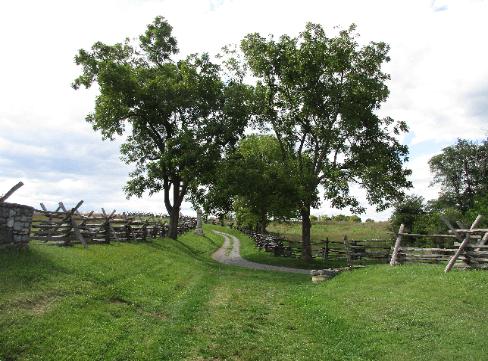
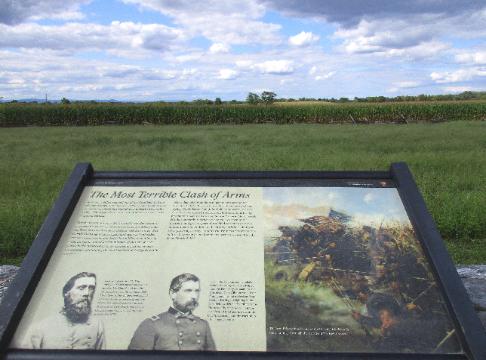
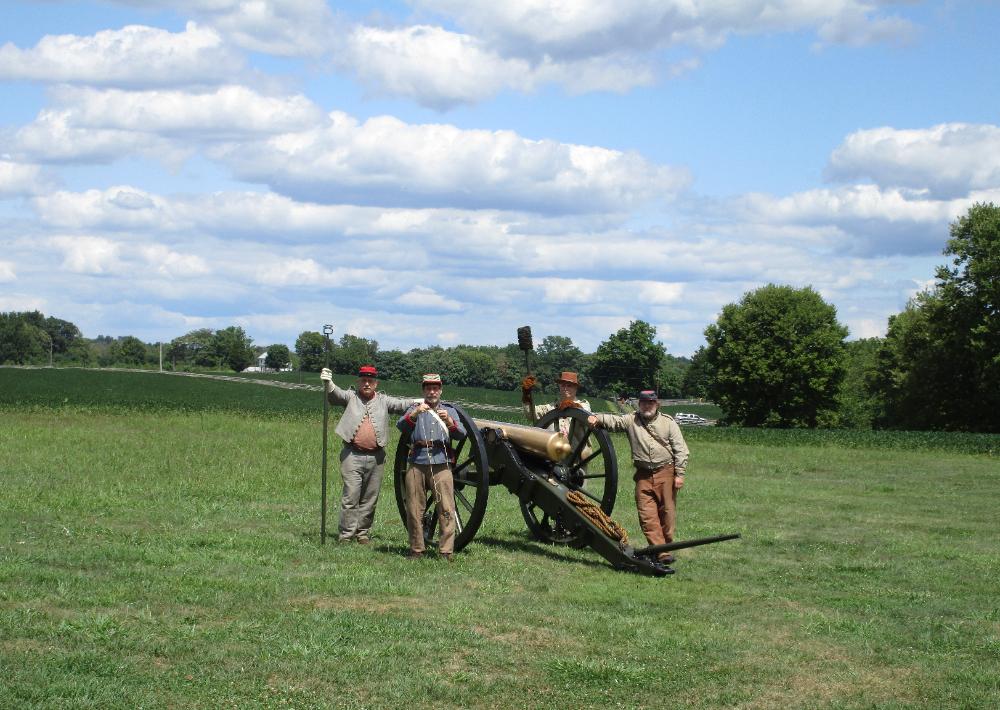
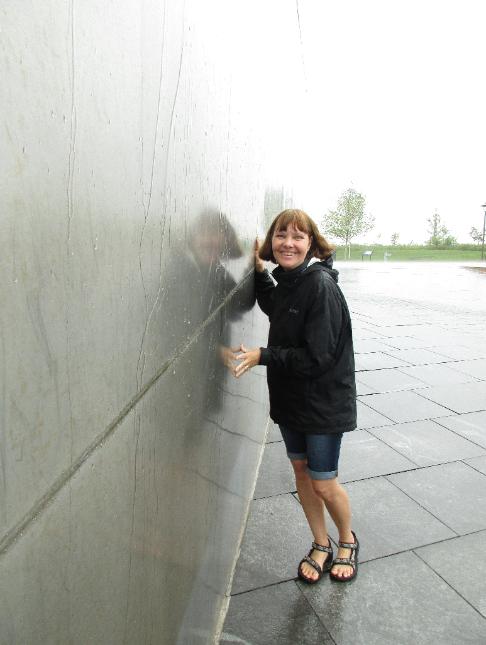
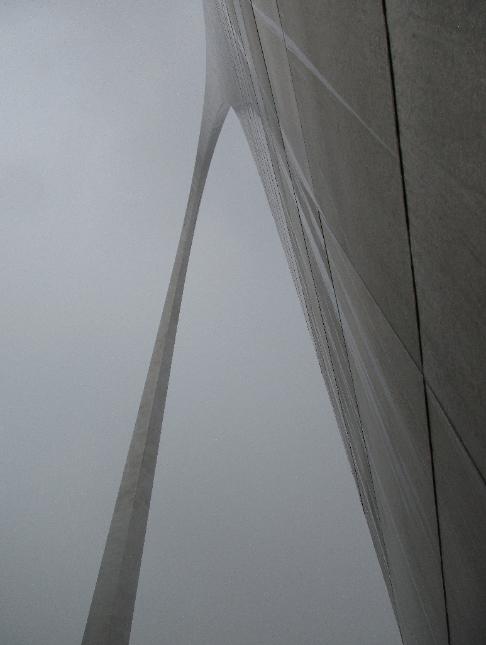
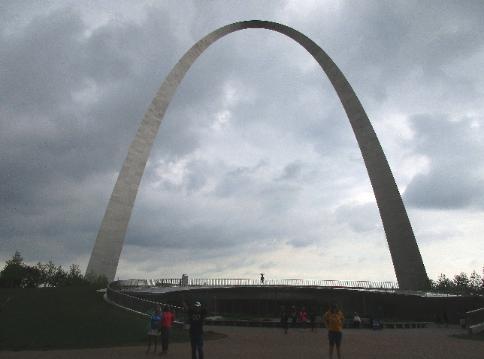
| Nighttime view of the Gateway Arch and downtown St. Louis from our riverfront room at the Casino Queen looking across the Mississippi |
| Gateway Arch & Civil War Battlegrounds |
Each time we make the road trip from Colorado
to Maine we try to take a different route and
see a few new sights along the way. This time
we mostly followed I-70. Our first notable stop
was the Gateway Arch in St. Louis ("Gateway to
the West"). If you go, we recommend you take
the claustrophobic ride to the top in one of the
cramped five-seater pods inside the Arch. It's a
strange 4-minute journey: from the pod window
all you can see are girders and tightly spiraling
interior stairs. Once you exit the pod you climb
a few extra steps to an observation platform
inside the Arch, where you can peer out from
narrow windows at the dramatic views.
Our next noteworthy stop was Harpers Ferry in
West Virginia. We stayed put for two nights and
thoroughly enjoyed this small town full of Civil
War history. It's the site of John Brown's Raid (a
precursor to the Civil War). From Harpers Ferry
we traveled to two of the most important battle-
grounds of the Civil War -- Antietam, Maryland
and Gettysburg, Pennsylvania. Both hold
unenviable records. Antietam witnessed the
single bloodiest day of the war with over 23,000
casualties on Sep 17, 1862. Gettysburg was the
site of the bloodiest overall battle with 51,112
casualties over three days from July 1-3, 1863.
to Maine we try to take a different route and
see a few new sights along the way. This time
we mostly followed I-70. Our first notable stop
was the Gateway Arch in St. Louis ("Gateway to
the West"). If you go, we recommend you take
the claustrophobic ride to the top in one of the
cramped five-seater pods inside the Arch. It's a
strange 4-minute journey: from the pod window
all you can see are girders and tightly spiraling
interior stairs. Once you exit the pod you climb
a few extra steps to an observation platform
inside the Arch, where you can peer out from
narrow windows at the dramatic views.
Our next noteworthy stop was Harpers Ferry in
West Virginia. We stayed put for two nights and
thoroughly enjoyed this small town full of Civil
War history. It's the site of John Brown's Raid (a
precursor to the Civil War). From Harpers Ferry
we traveled to two of the most important battle-
grounds of the Civil War -- Antietam, Maryland
and Gettysburg, Pennsylvania. Both hold
unenviable records. Antietam witnessed the
single bloodiest day of the war with over 23,000
casualties on Sep 17, 1862. Gettysburg was the
site of the bloodiest overall battle with 51,112
casualties over three days from July 1-3, 1863.
| Four months after the battle, Lincoln delivered his famous Gettysburg Address from this spot |
| A short walk across the footbridge brings you from West Virginia into Maryland following right along the Appalachian Trail |
| View from The Point in the late afternoon when the lighting is more favorable |
| Harpers Ferry isn't all about historical sites. It's also a lovely town with plenty of hiking trails and scenic points. At left is the overlook known as The Point, at the confluence of the Potomac and Shenandoah Rivers. At right is a footbridge that crosses the Potomac River. |
| The General Store is just one of many that you can enter to get an idea of what typical shops would have looked like just before the Civil War |
| Brown's controversial actions were viewed as treasonous by some and heroic by others. Although the raid failed, it helped ignite the flames of the Civil War. Former slave Frederick Douglass proclaimed that Brown's fight here began "the war that ended slavery." |
| Brown raided the federal armory which once stood on this grassy plot. (It was later blown up by Union soldiers to keep its weapons from getting into the hands of the Confederates.) Brown's goal was to arm abolitionists and slaves for a violent uprising in the South. |
| This is the actual firehouse, which became known as John Brown's Fort. Its location has changed four times -- including a visit to Chicago for the World's Exposition. |
| The stone marker identifies the original site of the firehouse where the abolitionist John Brown and his men made their last stand in October 1859 |
| This town gets big points for quaintness, and most of the buildings are historic and furnished as they would have been in the 1860's |
| We left Antietam behind and continued another half an hour to Harpers Ferry |
| How such a beautiful spot could be the site of so much death and destruction is hard to fathom |
| A small number of Confederate troops at Sunken Road held off a larger Union force. Many thousands were killed here. |
| Some of the most terrible fighting took place at this cornfield |
| Dunker Church just across from the visitor center was in the heart of the action. Lincoln visited this church after the battle when it served as a temporary hospital |
| Of nearly 100,000 soldiers engaged in battle, about 23,000 were killed, wounded, or missing |
| View of the field of battle from the Visitor Center |
| The museum at the visitor center brought home just how devastating this one-day battle was |
| We arrived just in time for a Civil War rifle and cannon demo |
| A 9-hour driving day followed by a 4-hour driving day brought us to Antietam (an-TEET-um) Battleground in Maryland, which we visited on our way to Harpers Ferry |
| We spent a long happy hour enjoying the view from our room |
| By the time we left it was pouring rain -- so we took shelter under the Arch itself |
| The Old Courthouse makes for a pretty sight from above. The landmark Dred Scott case was tried here. |
| Looking west you can see Busch Stadium, the Old Courthouse, and downtown St. Louis |
| You clamber out of the pod and up some steps to the observation platform, which is inside the Arch at the very top. The windows are narrow but they offer good views. |
| Our first pause along our route was at "The World's Largest Easel" to see a huge Van Gogh replica of “Three Sunflowers in a Vase” in Goodland, Kansas |
| Next afternoon the skies were threatening but it wasn’t raining (yet) as we walked towards the Gateway Arch |
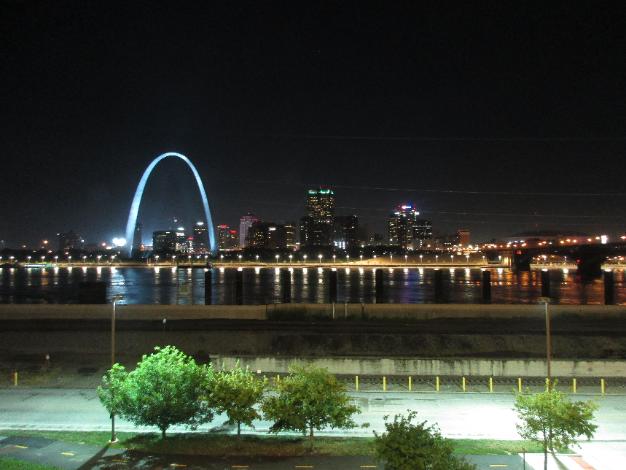
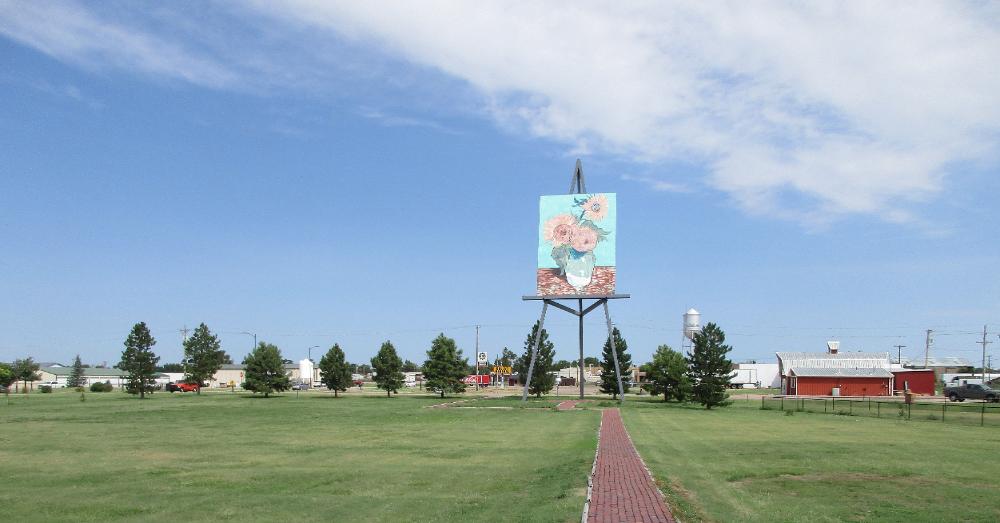
| Goodland, Kansas |
| Gateway Arch -- St. Louis, Missouri |
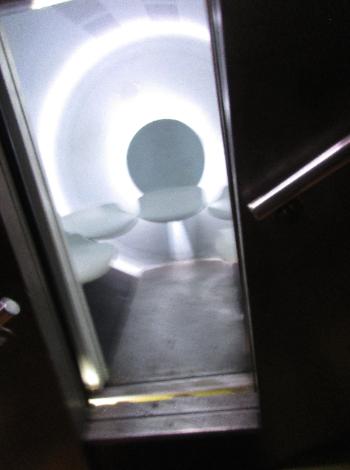
| This is one of the five-seater pods that takes you to the top in four minutes. It's a claustrophobic ride! |

| We killed some time in the museum and learned that Eero Saarinen provided the winning design for what became the Gateway Arch |
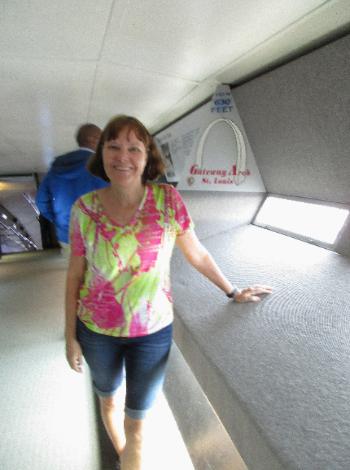
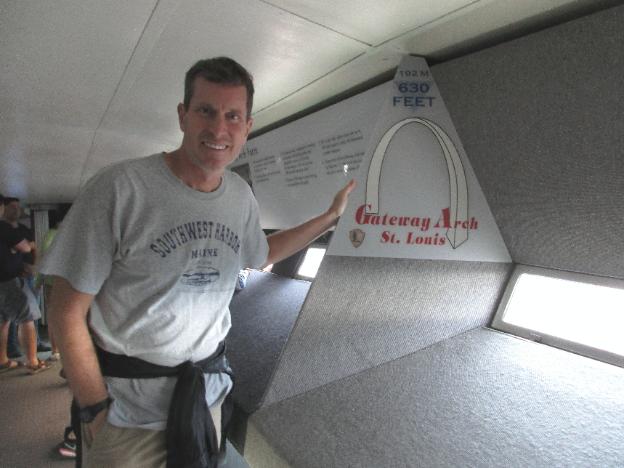
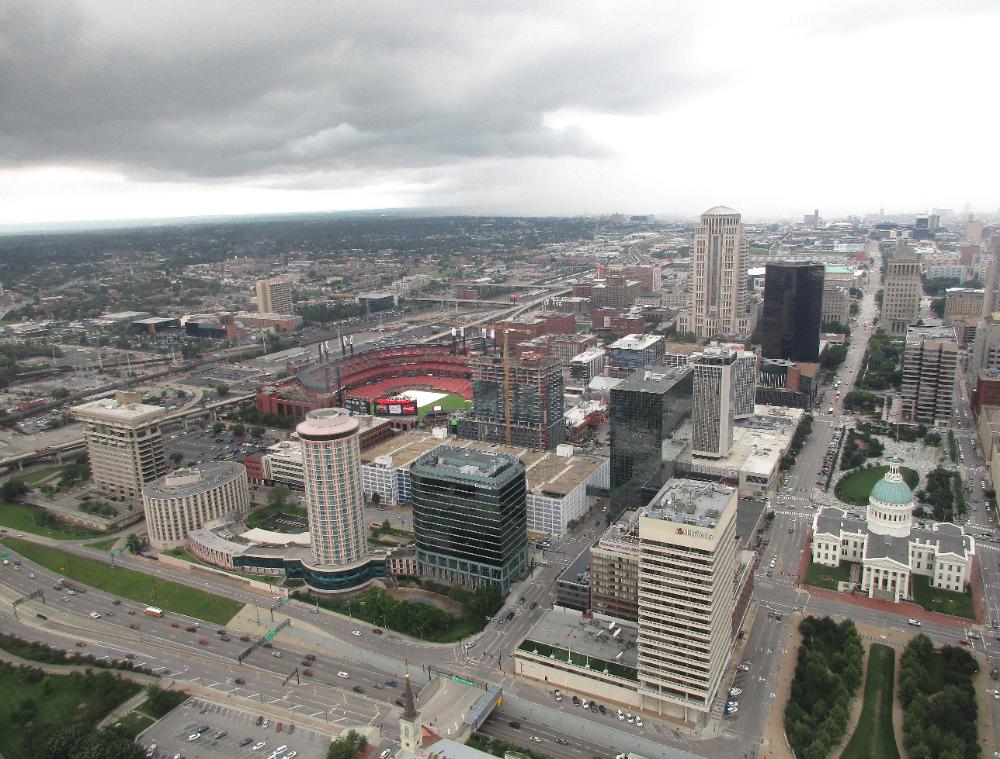
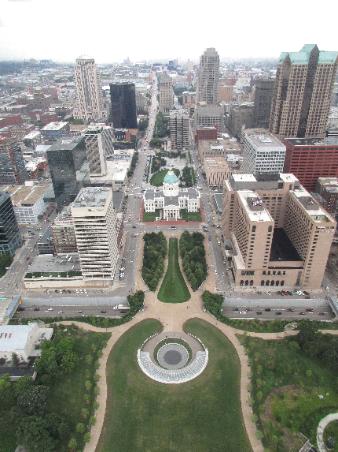
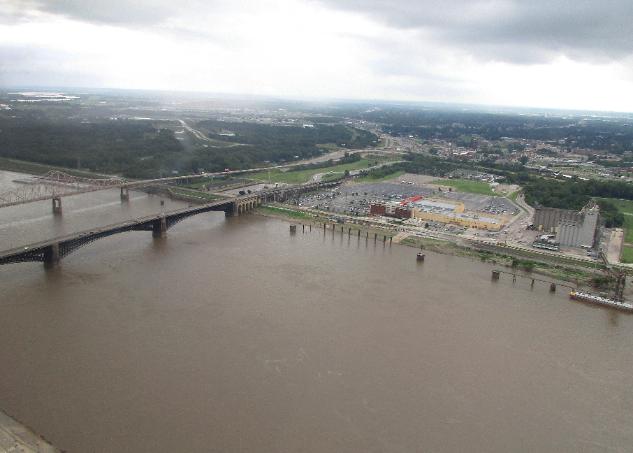
| Looking east you can see the Mississippi River and the Casino Queen where we spent the night |
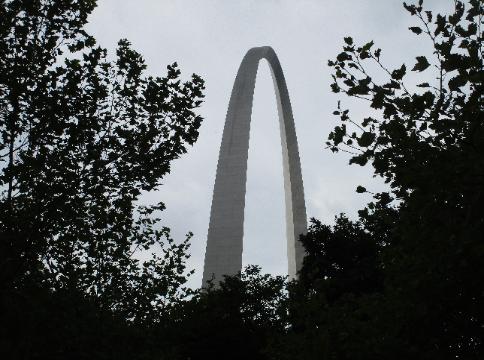
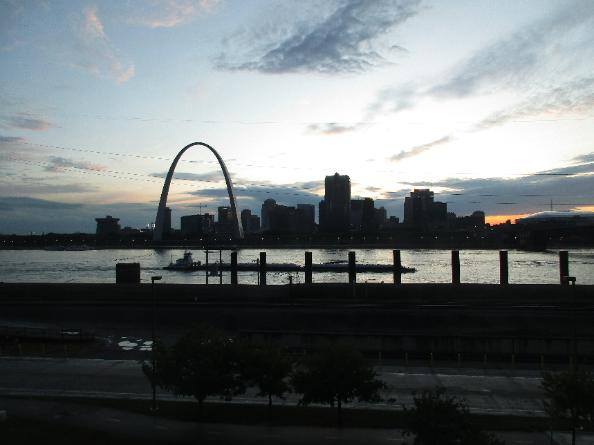
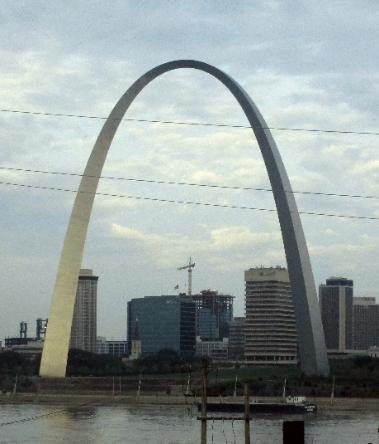
| In the morning we caught this interesting two-toned effect |
| Antietam Battleground, Maryland |
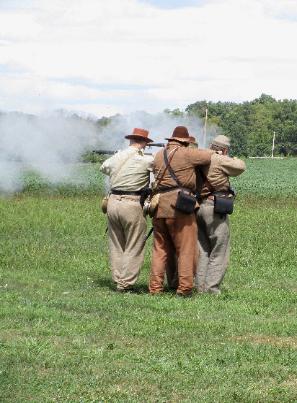
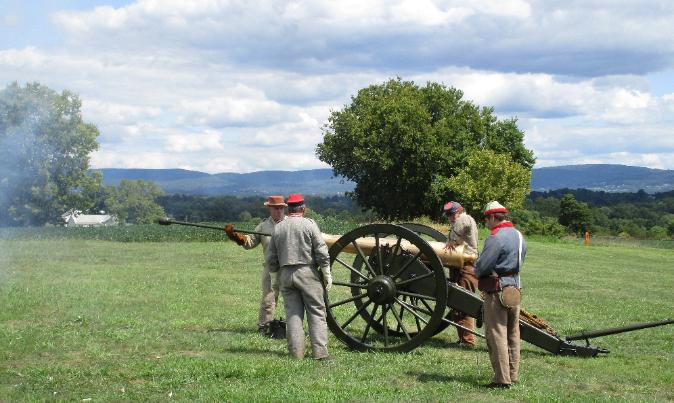
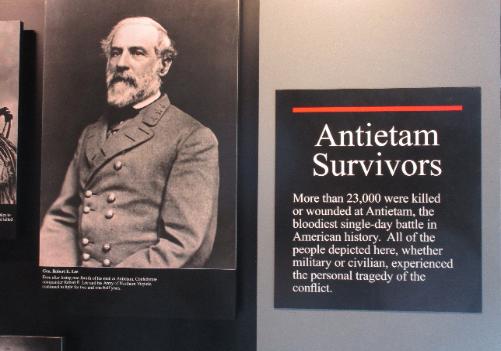
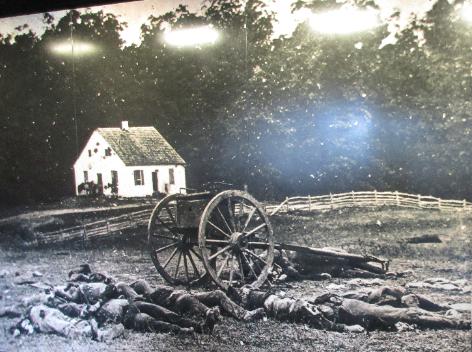
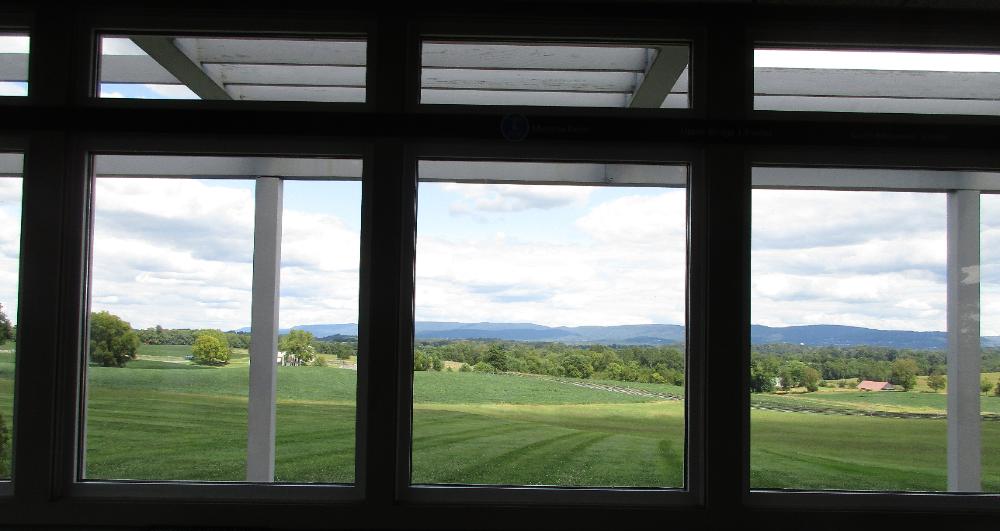
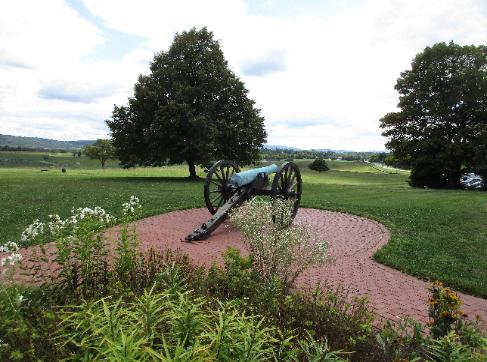
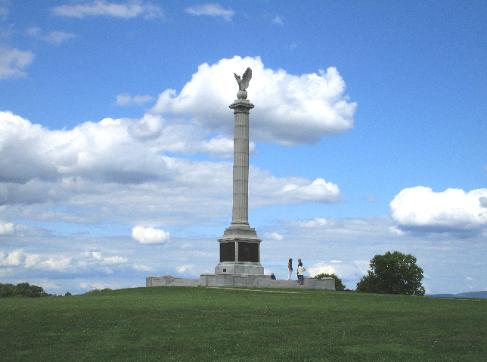
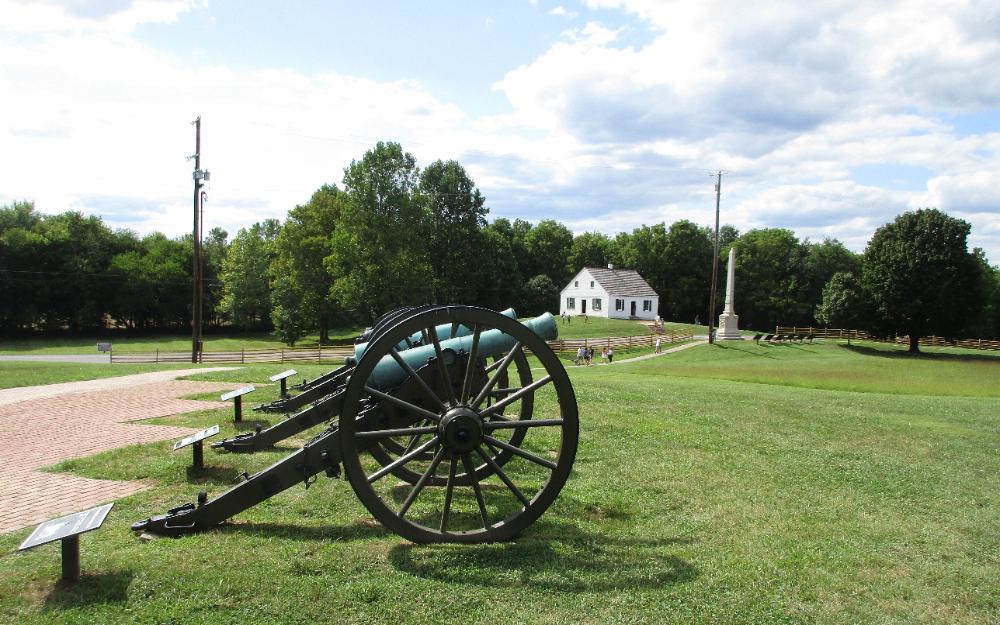
| Sunken Road (Bloody Lane) was another key battleground |
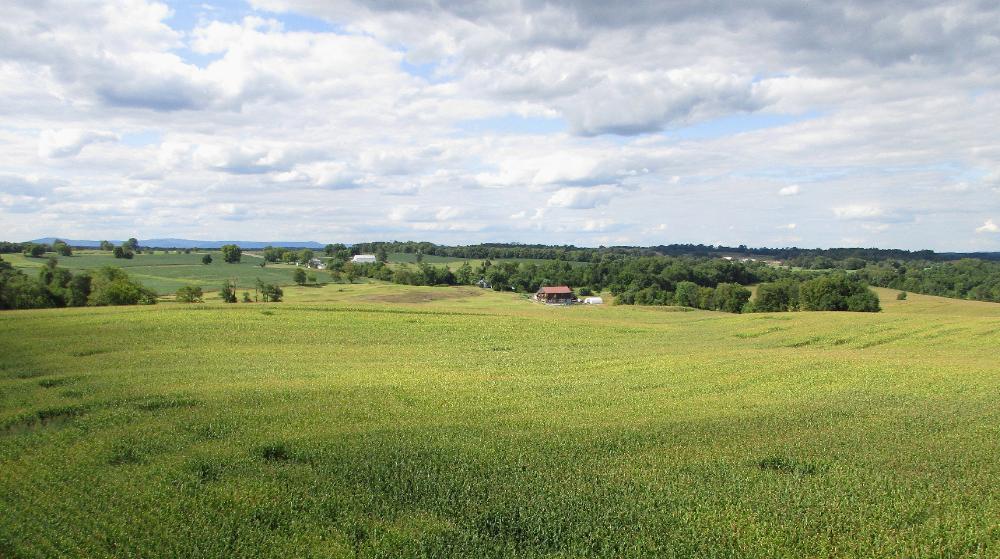
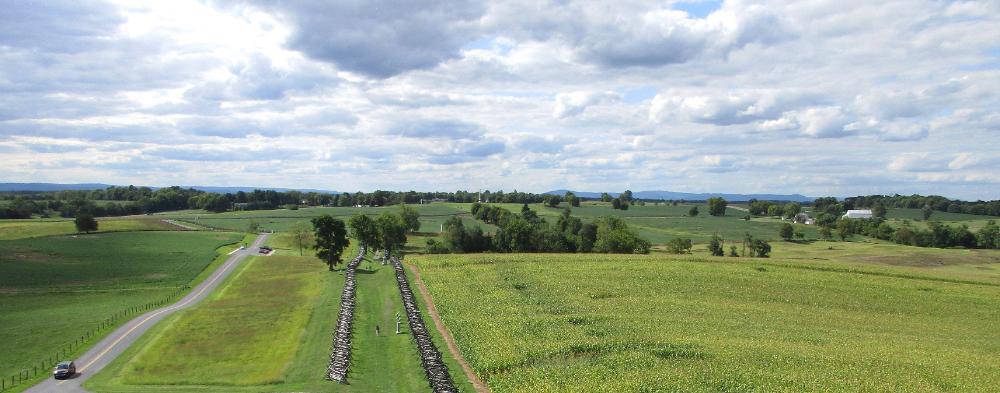
| Harpers Ferry, West Virginia |
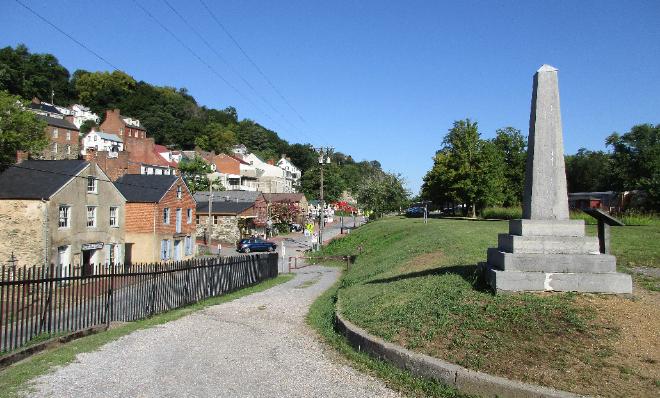
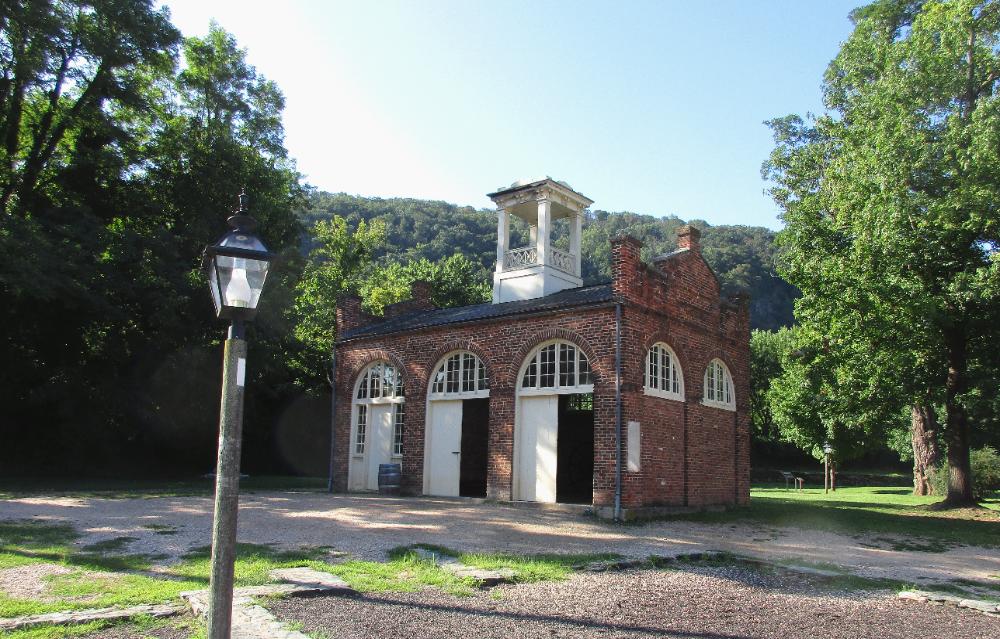
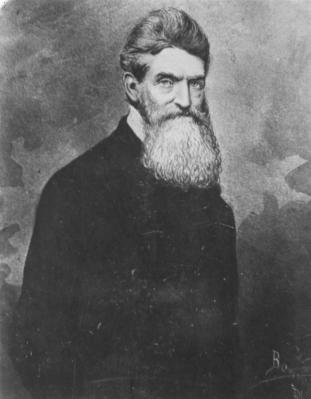
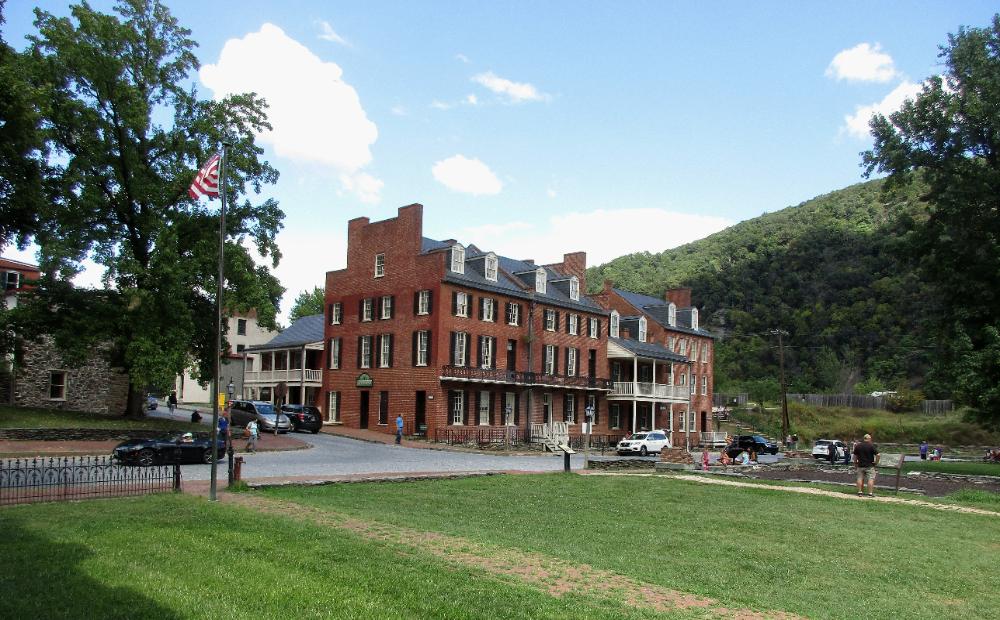
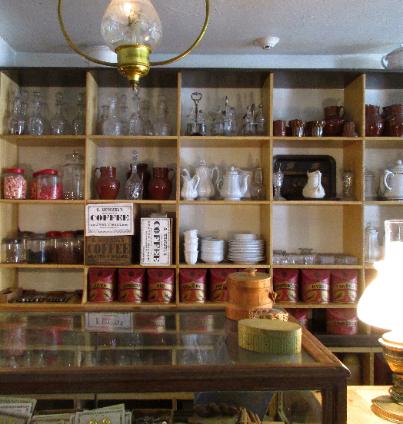
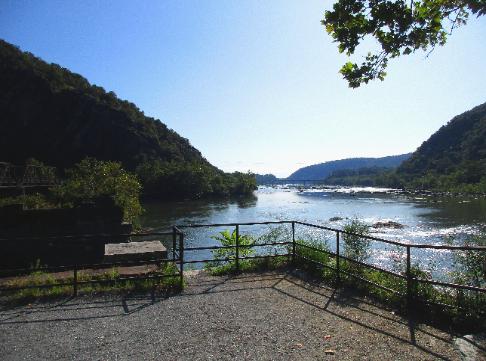
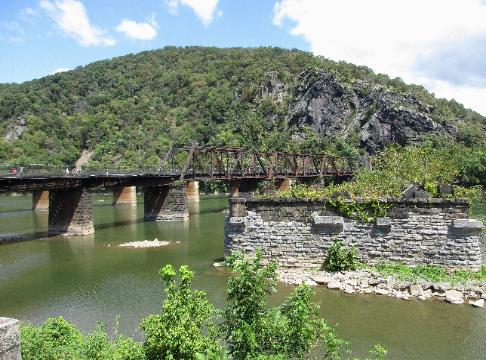
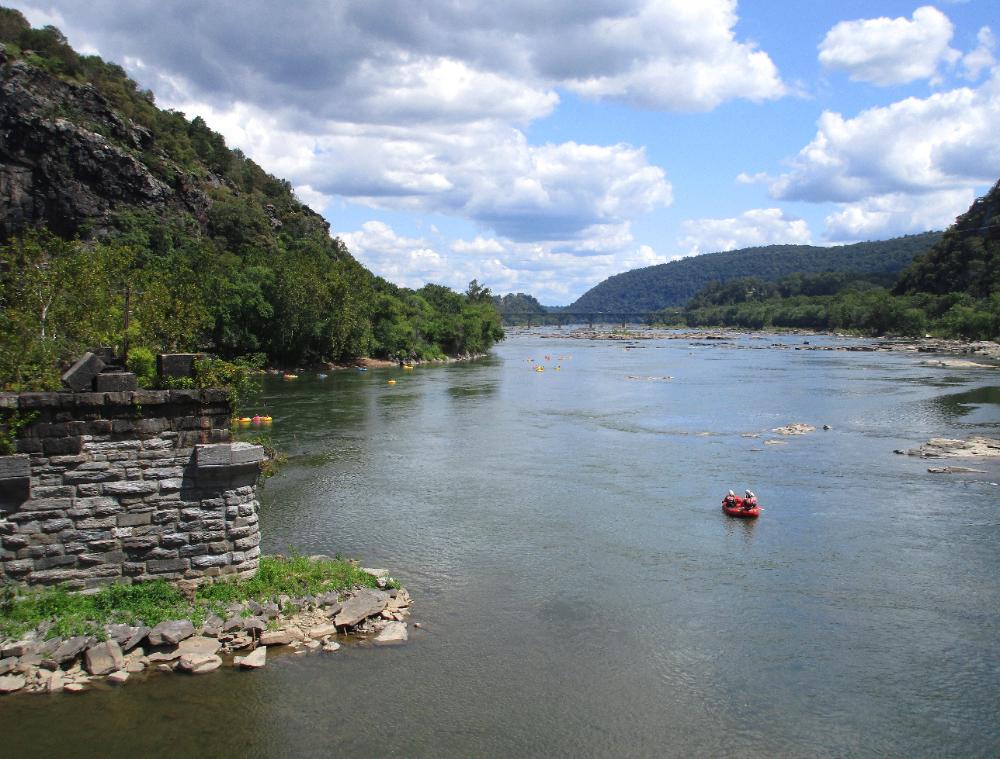
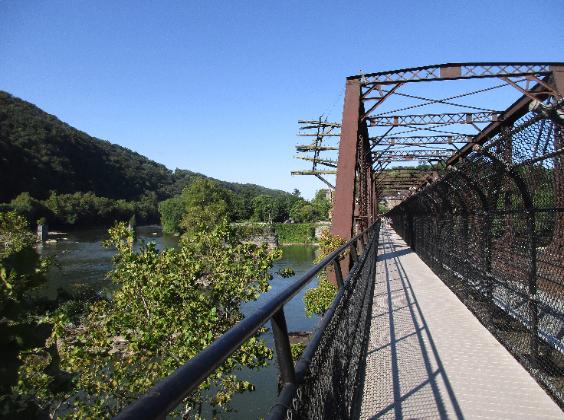
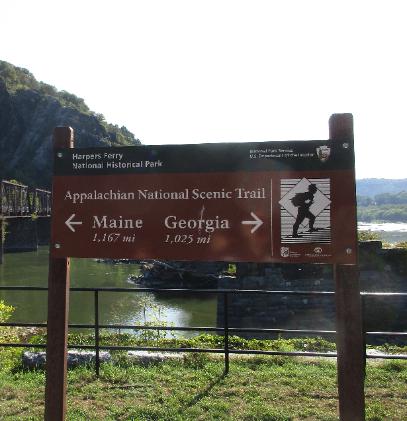
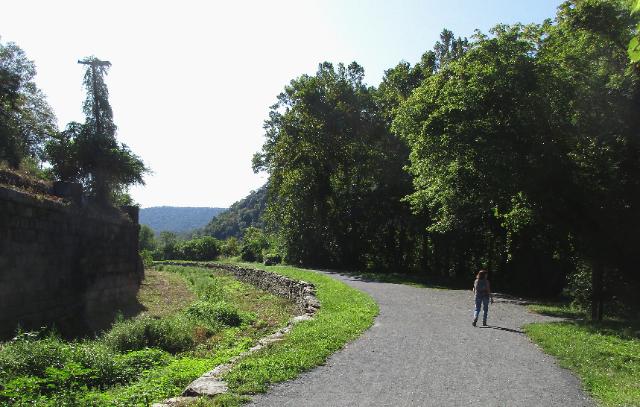
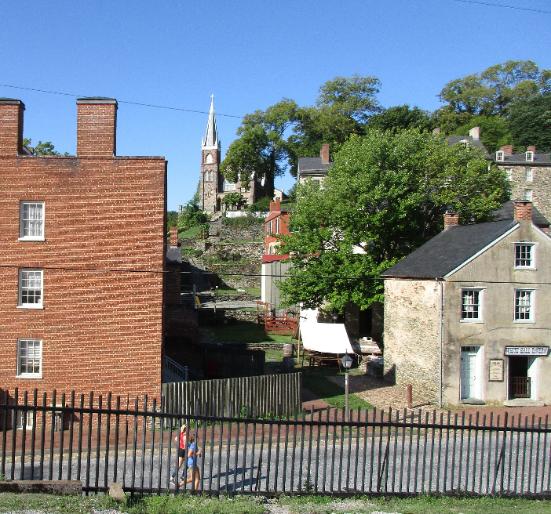
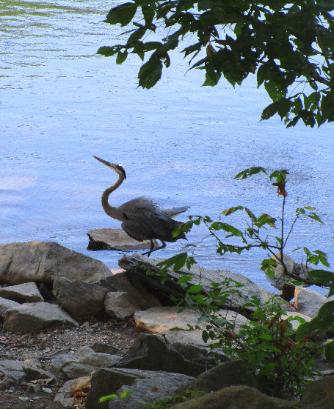
| The Appalachian Trail continues all the way to Maine if you just keep on walking! |
| Blue heron fishing along the river's edge |
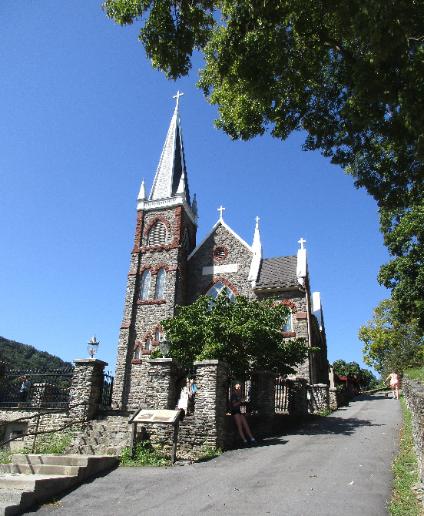
| We also visited St. Peters Roman Catholic Church at the top of a hill |
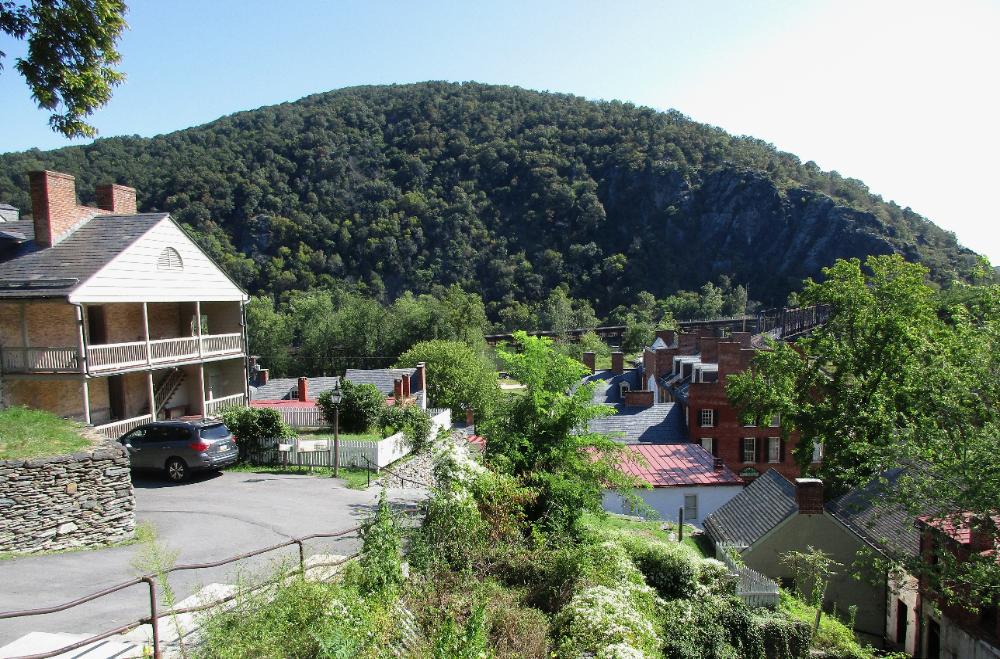
| We finished up our Civil War history tour with a visit to Gettysburg, about an hour's drive from Harper's Ferry. This battle involved the largest number of casualties of the entire war and is usually considered the war's turning point. |
| We paid $15 each to see the excellent movie and the Cyclorama (above) – a circular painting completed in the late 1800s mixed with sound and light effects that make you feel like you're standing in the middle of the battle during Pickett’s Charge |
| We finished up with a stop at the Appalachian Trail Headquarters. Harpers Ferry represents roughly the midpoint of the hike from Georgia to Maine. |
| You can easily fill a day or a weekend here. There's a Civil War Museum, a Battle of Harpers Ferry Musem, and a Black History Museum describing how many former slaves were returned to slavery when the Union forces lost Harpers Ferry. You can also pop into historic dry goods stores, tailor shops, watchmaker shops, confectionaries, residences, boarding houses, taverns, etc. |
| Further up the hill you reach Jefferson's Rock, named for Thomas J. who wrote: "This scene is worth a voyage across the Atlantic." But unfortunately the view these days is mostly compromised by the trees. |
| From the church you get decent views of the town. The hill straight ahead is Maryland Heights, which hosted the first battle between Union and Confederate troops in Maryland. The Confederates took this strategic hill then seized the town, resulting in the capture of 12,419 Union soldiers -- the largest surrender of Federal forces during the Civil War. |
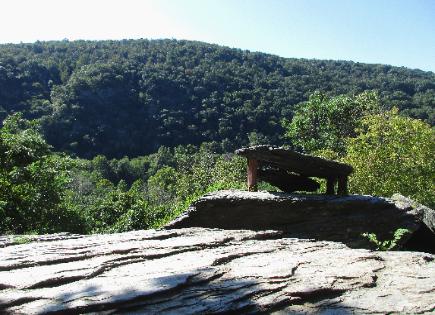
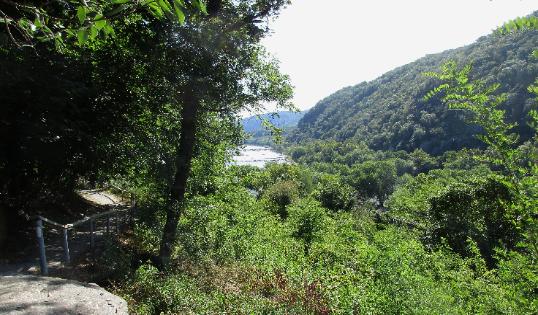
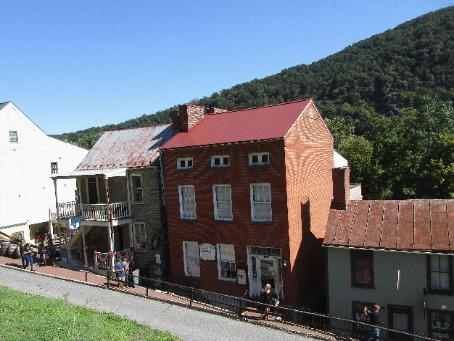
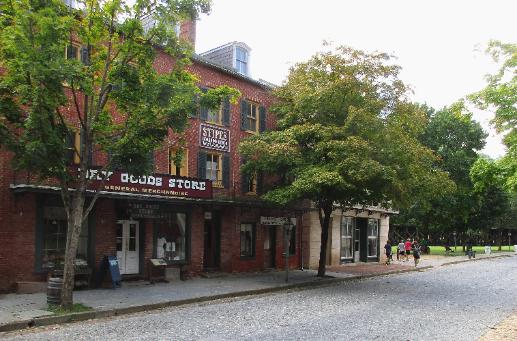
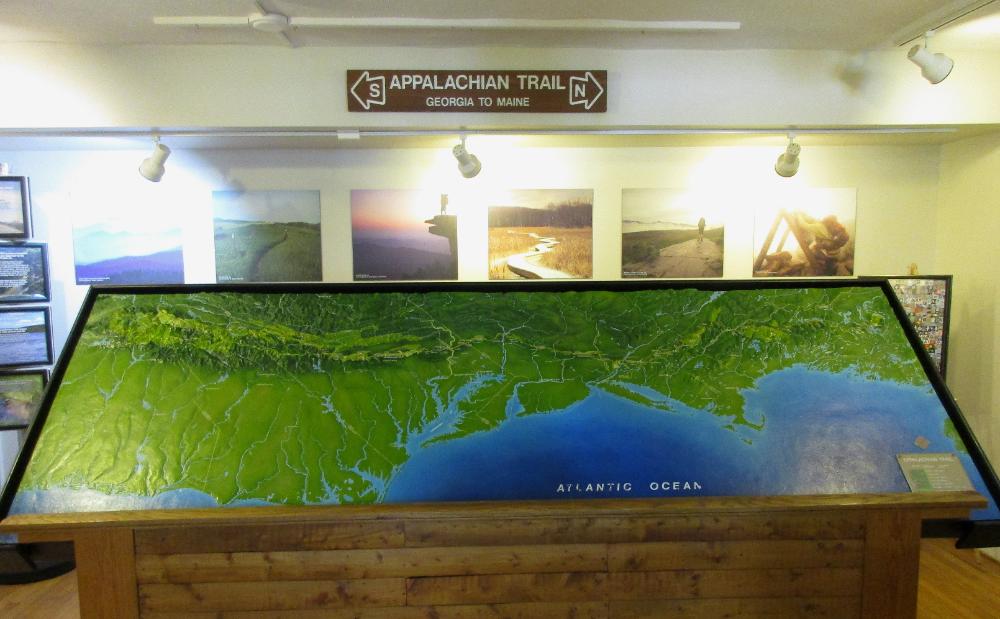
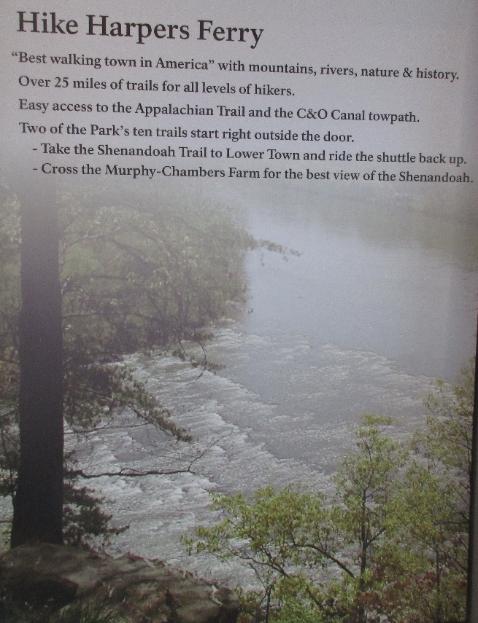

| We really enjoyed our time in Harpers Ferry. This cute fawn bid us farewell as we headed on our way. |
| Gettysburg Battleground, Pennsylvania |
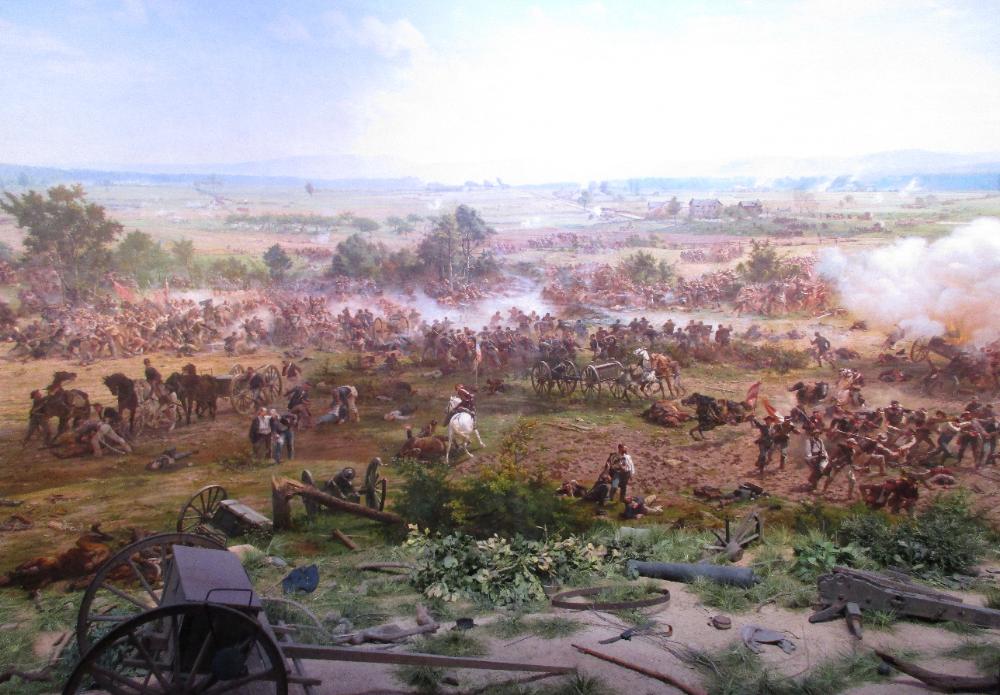
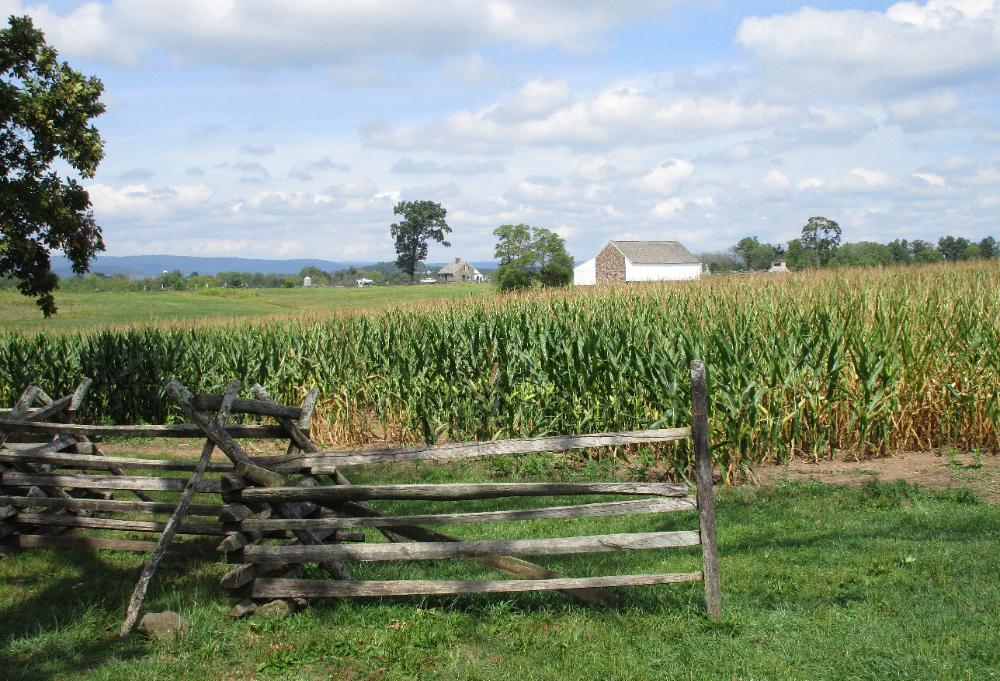
| "That these dead shall not have died in vain -- that this nation, under God, shall have a new birth of freedom -- and that government of the people, by the people, for the people, shall not perish from the earth" |
| We found it easy to visualize the two forces facing off from two ridges – Seminary Ridge and Cemetery Ridge – with a wide field in between. This sign marks the site of Pickett's Charge, a decisive turning point in the war, with 12,500 Confederates trying (and failing) to break through the Union center. |
| You can climb to the top of the Pennsylvania Monument for good views of the battleground |
| Then we saw the battle from the Union side, including standing atop Little Round Top. Occupying this high ground was of crucial importance and fiercely contested. |
| First we saw the battle from the Confederate side, following along Seminary Ridge. From here you can see Little Round Top, a key battleground. |
| After touring the extensive Civil War Museum, we began our drive – something like 22 miles all told – to see the main sites of the battle |
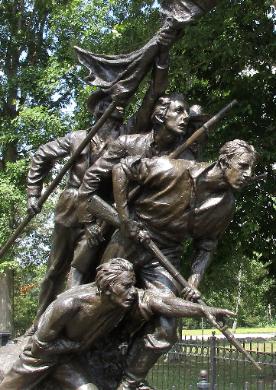
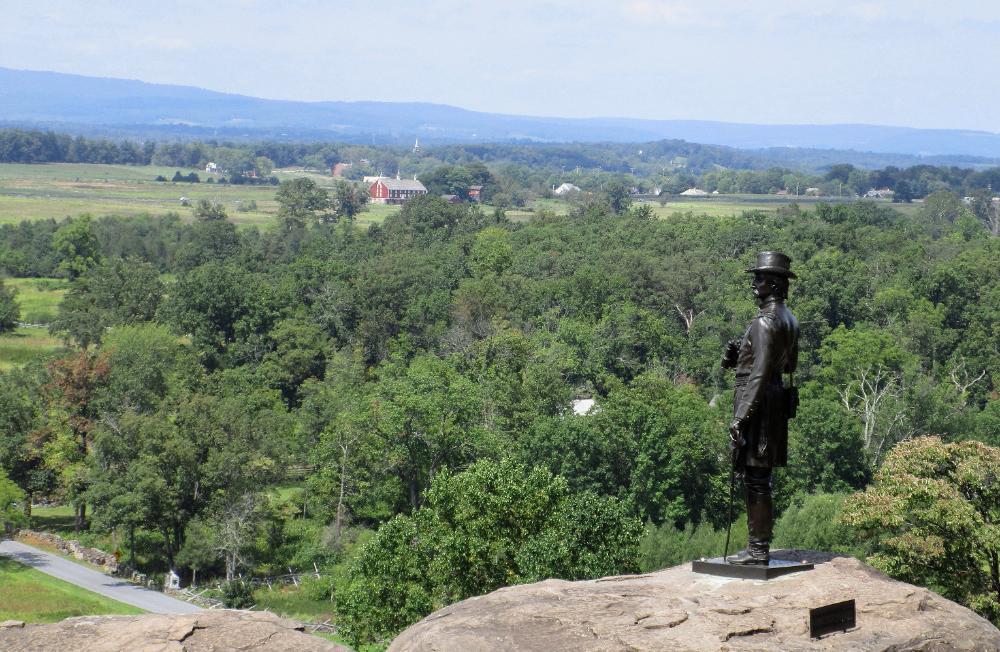
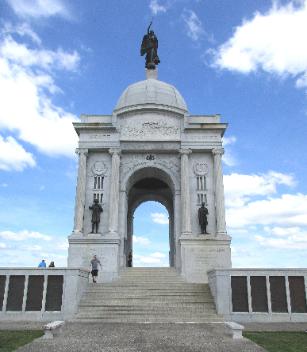
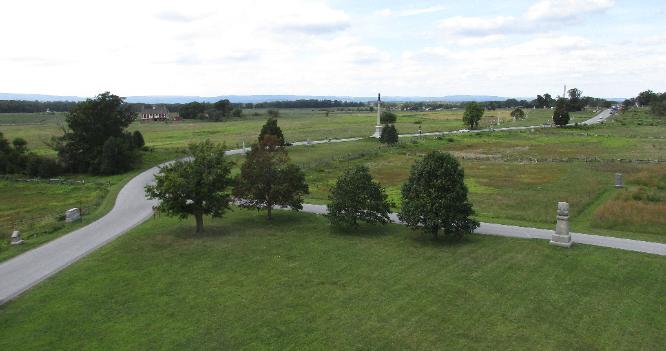
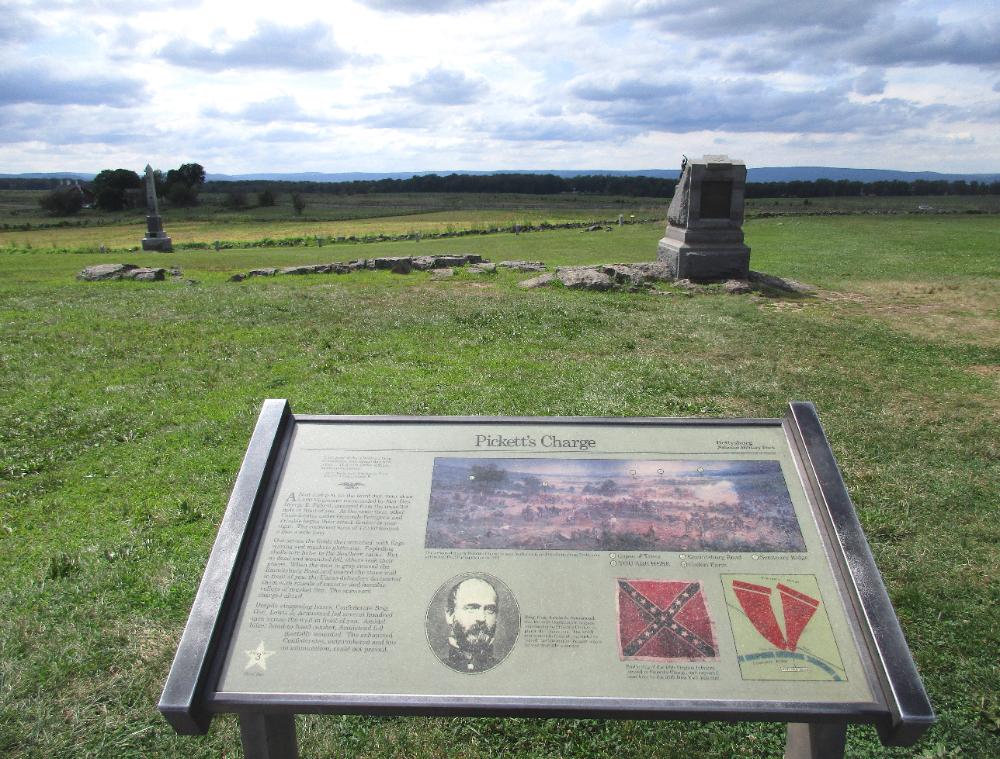
| Memorial statues are everywhere, marking where different state regiments served |